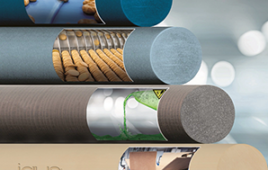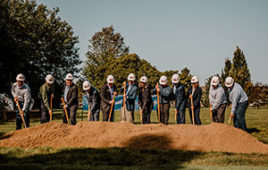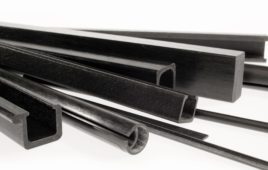A UT physicist has been instrumental in the discovery of four new super-heavy chemical elements — atomic numbers 113, 115, 117, and 118 — recently added to the periodic table.
Robert Grzywacz, along with collaborators at Oak Ridge National Laboratory, developed the software used in the equipment that detects the new elements and helps analyze data from the experiments. He is a co-author of recent papers, representing a collaboration between US and Russian scientists, that present new data on elements 113, 115, 117, and 118.
The International Union for Pure and Applied Chemistry recently announced formal verification of the four new chemical elements and recognized ORNL for the discovery of two: 115, temporarily named ununpentium (Uup, element 115), and 117, temporarily named ununseptium (Uus, element 117).
The four new elements complete the seventh row of the periodic table.
“The super-heavy element research is one of the most interesting efforts in nuclear physics,” said Grzywacz, a professor in the UT Department of Physics and Astronomy. “It concerns the core question of how protons and neutrons form bound systems — the nuclei. For us experimentalists, it is a formidable experimental challenge because the synthesis of super-heavy elements is incredibly difficult. It takes a concerted effort of many people to make it work. It is a fantastic but very also very time- and labor- intensive research program.”
Grzywacz is director of the UT-ORNL Joint Institute for Nuclear Physics and Applications (JINPA). He was formerly an ORNL Wigner Fellow.
Grzywacz and the ORNL team developed a data acquisition technology that uses a new type of digital signal processing to measure very fast nuclear decays down to a microsecond — one millionth of a second. Because the system was relatively untested, he and former UT postdoctoral researchers David Miller and Nathan Brewer tested and debugged the system, which resulted in a reliable process. The data acquisition system initially applied in the ORNL-based experiments was already used in studies searching for and detecting super-heavy nuclei in laboratories in Dubna, Russia, and Darmstadt, Germany.
The ORNL team worked with scientists from Russia and the United States on the discovery of two of the new elements. Russian scientists used actinide targets and intense 48Ca beams to manufacture new super-heavy elements. The ORNL group supplied the target material to produce the new elements, which can be synthesized only at an ORNL reactor facility. The UT-ORNL collaboration recently provided a new, more sensitive detection system used in experiments in Russia.
The ORNL team will have the honor of helping name elements 115 and 117. New elements can be named after a mythological concept, a mineral, a place or country, a property, or a scientist.
At the moment, there is no direct application for the two new elements because the quantities that can be produced are very small and unstable against decay, Grzywacz said. The properties of these elements may help scientists predict more new elements that can be synthesized, with some of them predicted to be more stable.
Grzywacz noted that one of the beauties of research is that every theoretical claim has to be verified experimentally.
“Experiments produce surprises for theories; theories make unexpected predictions for experiments,” he said. “This will never stop. There will be always an exciting problem to solve — and by the way, sometimes, and often unexpectedly, the solution is actually useful for everyone.”
Filed Under: Materials • advanced




